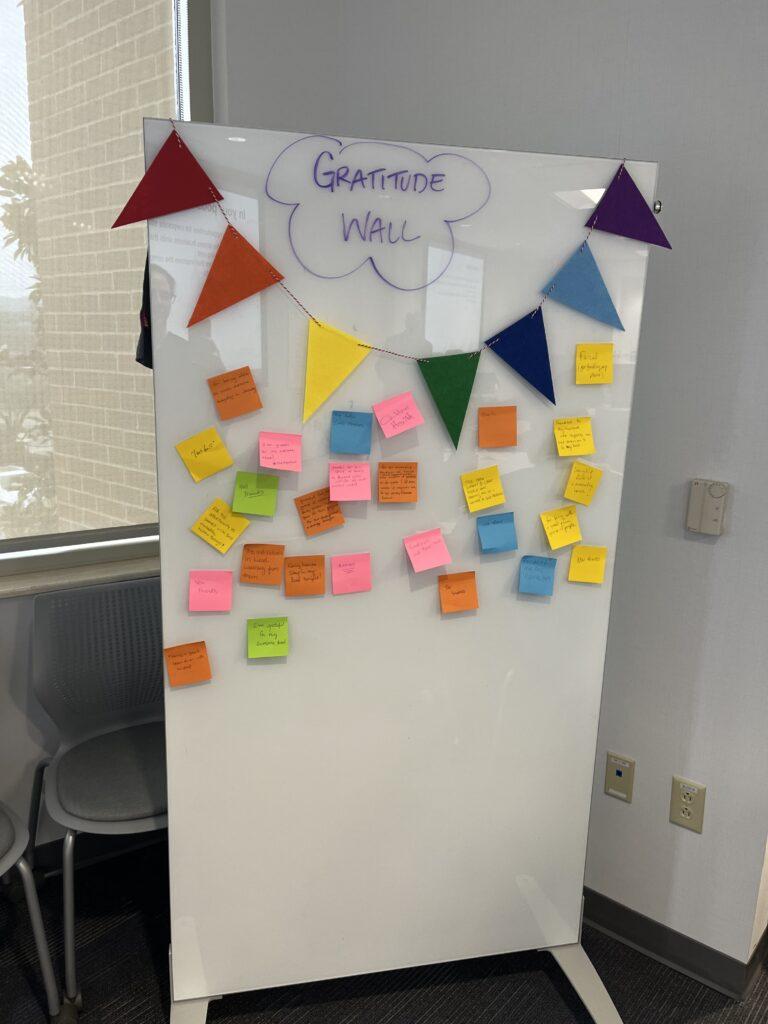When I mention that I am a fan of gratitude, I get a lot of curious expressions, and occasional rolled eyes. ‘You mean those cheesy posters with a gratitude quote?’ I smile and pause, and then share a bit of the science that makes gratitude so powerful.
Did you know that cortisol, one of our key stress hormones, typically takes 18 – 20 minutes to leave our brain? It can stay in our blood stream for 3 – 4 hours after it’s been released if unaddressed. During the time cortisol has flooded our brains, we are primed to look for quick answers, to listen less, to default to binary-type thinking. We can lose up to 75% of the options that we normally can think about when looking at a complex problem with just a moderate cortisol spike.
What if you’re in a key planning meeting when you experience such a cortisol spike? Are you out of luck? Not necessarily. Turns out that taking ~30 seconds to anchor on a moment or memory for which you are truly grateful, does something rather interesting to our brain chemistry. When we are connecting to this feeling of gratitude, our brains release other chemicals (serotonin and dopamine, known as the ‘feel good’ neurotransmitters) that act as a cortisol sweep. They flush the cortisol from our brains! Removing the cortisol this quickly gives your neo-cortex (where you do your complex and creative and future-state thinking) a chance to re-engage. I call this one of the best brain hacks we have at our disposal.
More often than not, when I share the science behind my love of gratitude, I get several ‘Wow’s’, or ‘That was not what I expected’. And, every now and then, an earlier naysayer will send me a copy of one of those cheesy gratitude signs. I absolutely love it.



